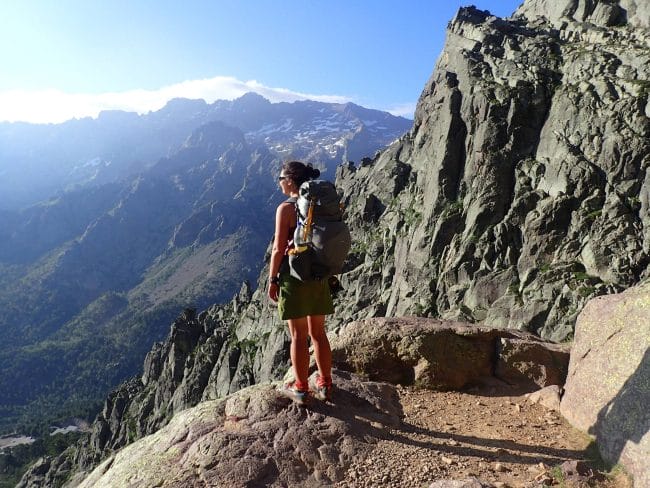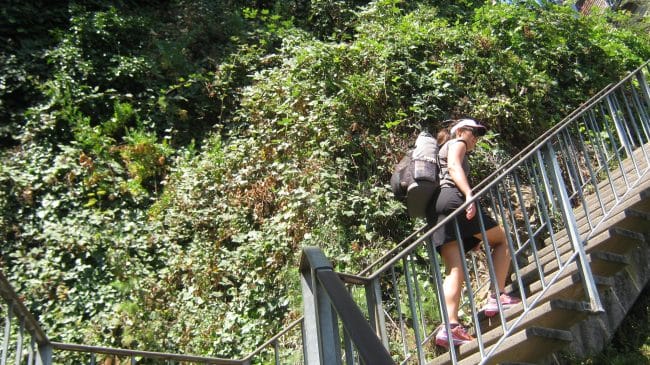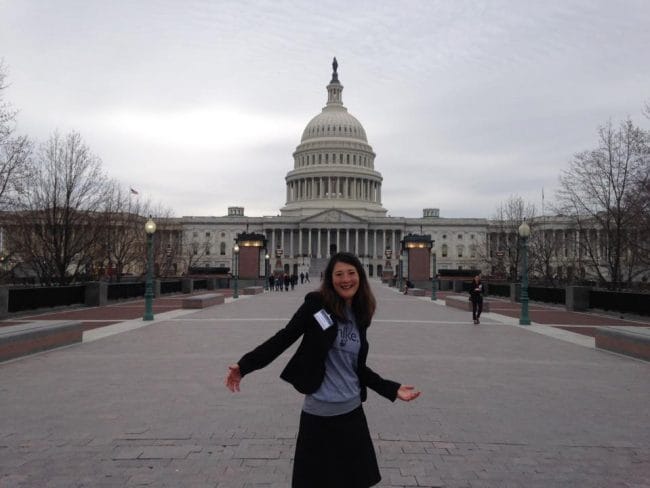This master thru-hiker is trekking across a city near you
The veteran of more than 20 long-distance wilderness hikes, Liz Thomas knows how to navigate the most remote, wild places on earth. In 2011, she set the record for the fastest female thru-hike of the Appalachian Trail, and she’s gone on to make a living as a trail expert, conservation advocate, and author.
 Liz Thomas is an expert thru-hiker and conservation advocate. She’s completed over 20 long wilderness trail, and is growing her list of city thru-hikes.Photo credit: Liz Thomas
Liz Thomas is an expert thru-hiker and conservation advocate. She’s completed over 20 long wilderness trail, and is growing her list of city thru-hikes.Photo credit: Liz Thomas
But lately, Thomas has been charting a different course: she’s a leader in the growing movement of city thru-hiking, or what Outside magazine recently described as “like the Appalachian Trail, but with more stoplights.”
“Just like the A.T., the Pacific Crest Trail, or the Continental Divide Trail connects national parks, famous mountains, and wilderness areas, the idea with city hiking is to connect the hidden highlights of a city—public art, or parks—on a multi-day journey,” she says. Across Los Angeles, Seattle, Portland, San Francisco, Chicago, Denver, and beyond, Thomas is following her feet to new and surprising places.
Thomas doesn’t sit still very often, but we managed to catch her for a quick conversation about finding the wilderness within city limits.
How’d you get into city hiking?
My first long city hike was in Los Angeles—which, when you think about it, is kind of a crazy place to start because of its reputation as being so car-centric. But as a hilly city, L.A. also has hundreds of pedestrian staircases that let you shortcut between streets and go where cars can’t—just like on a wilderness trail. I followed a 180-mile route that connected 300 staircases, among people who are building a community around walking.
 Thomas seeks out pedestrian staircases in hilly cities like San Francisco and L.A. “It was my goal to find the places where people are building community around walking.”Photo credit: Liz Thomas
Thomas seeks out pedestrian staircases in hilly cities like San Francisco and L.A. “It was my goal to find the places where people are building community around walking.”Photo credit: Liz Thomas
Freeways and sidewalks aren’t what most people think of when they think of spending time in nature. What are the benefits of hiking in the city?
“I love being on trail, but I also understand that the prospect of wilderness travel can be really intimidating.”
You have to travel to the trailhead, and round up the gear, which can be expensive, and then you have to figure out how to use it. How do you find clean water? What happens if someone gets hurt? What about wildlife? These are the kinds of questions you don’t have to worry about in a city setting—it opens a lot more doors, and you can do it for a lot less money.
At the same time, so many of the things I love about wilderness hiking carry over to the city: you’re still using your body, and seeing the world at three miles per hour. You’re exploring and seeing new places, meeting cool people, uncovering all the hidden surprises a city has to offer, navigating with a map, and contending with unexpected hurdles on your route.
What are some of the challenges particular to hiking in the city?
When you’re navigating in the wilderness, you sometimes get “cliffed out”—or cut off by terrain that’s too steep or dangerous to hike. That can happen in a city, too, but usually it’s because there are big gaps in the pedestrian infrastructure. So instead of a literal cliff, there’s a busy road to cross, or a highway with no overpass, or an industrial site, and you have to go way out of your way to get where you want to go on foot.
In Denver, I hiked the length of Colfax Avenue, which is this four-lane road that runs all the way through the city. Most people travel by car on Colfax, and it’s not really well-built for pedestrians, even though thousands of people that live along it don’t have access to a car.
 Thomas sees trails, pedestrian, and conservation advocacy as part of giving back to the places that she’s hiked. She’s journeyed all the way to D.C. to speak with lawmakers about the importance of legislation like the National Scenic Trails Act.Photo credit: Liz Thomas
Thomas sees trails, pedestrian, and conservation advocacy as part of giving back to the places that she’s hiked. She’s journeyed all the way to D.C. to speak with lawmakers about the importance of legislation like the National Scenic Trails Act.Photo credit: Liz Thomas
How can we change that?
I think it helps to motivate people who have the access and capacity to influence planning decisions. So I came back to Denver a little later for a hike that connected all the breweries within city limits—at the time, there were 63 (although it being Denver, by now there are even more!). It was a fun way to spend a few days, but I had kind of a deeper motive: in Denver there are tons of people who love hiking, and love beer, but don’t care about pedestrian infrastructure at all. So I wanted to use that hike start those conversations with people I met along the way: Hey, there are a whole bunch of people who live in your city who don’t have the advantage of having a car. Countless Americans have no choice but to walk wherever they need to go. So how can we invest in and design our cities so everyone can get where they need to go safely?
At The Trust for Public Land, we’ve been tackling that question for decades. Learn how we’ve improved walking and biking infrastructure in metro areas like Seattle, Chattanooga, Chicago, and Cleveland—to name just a few.
